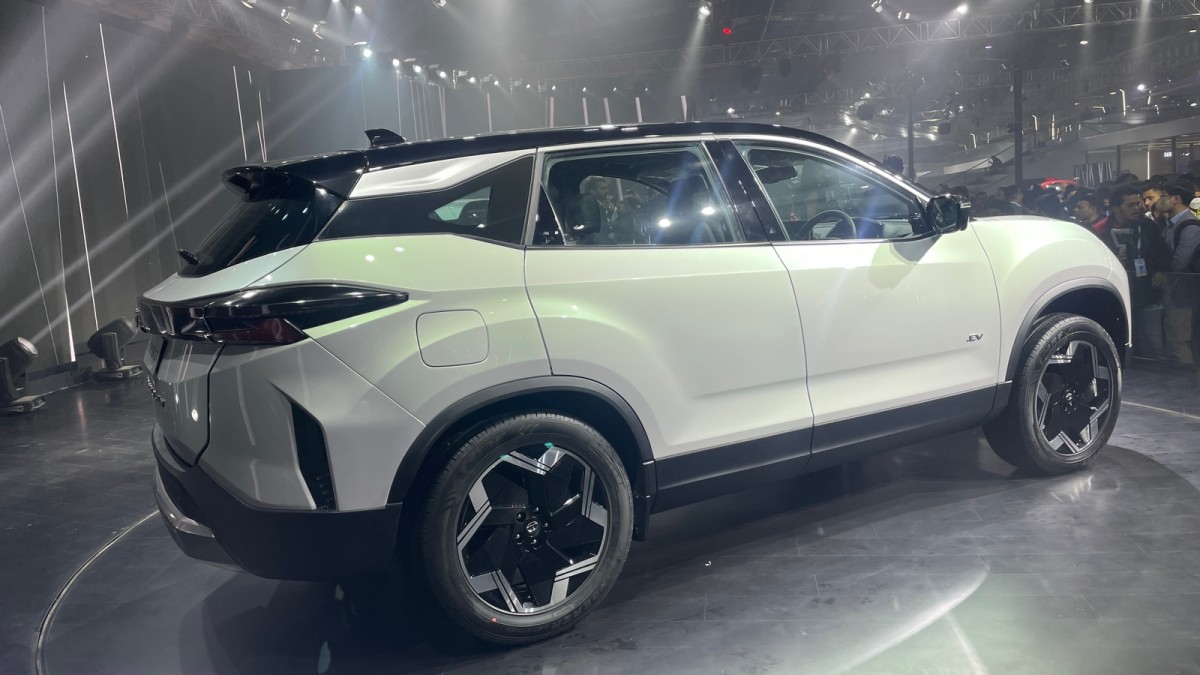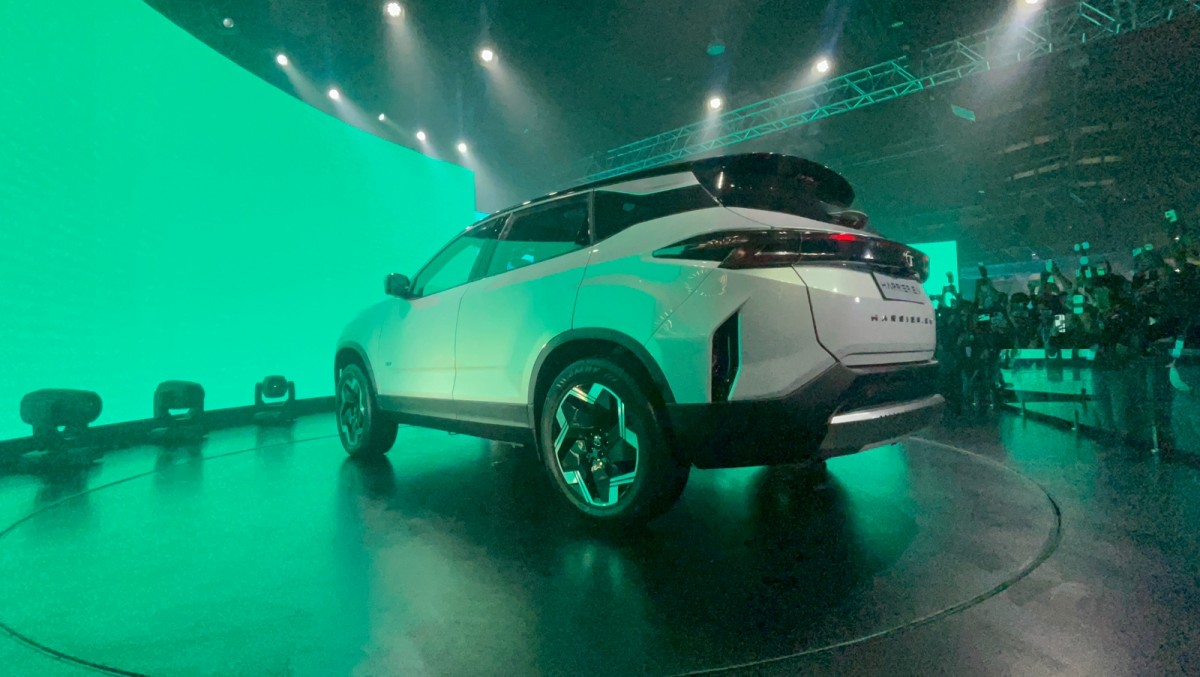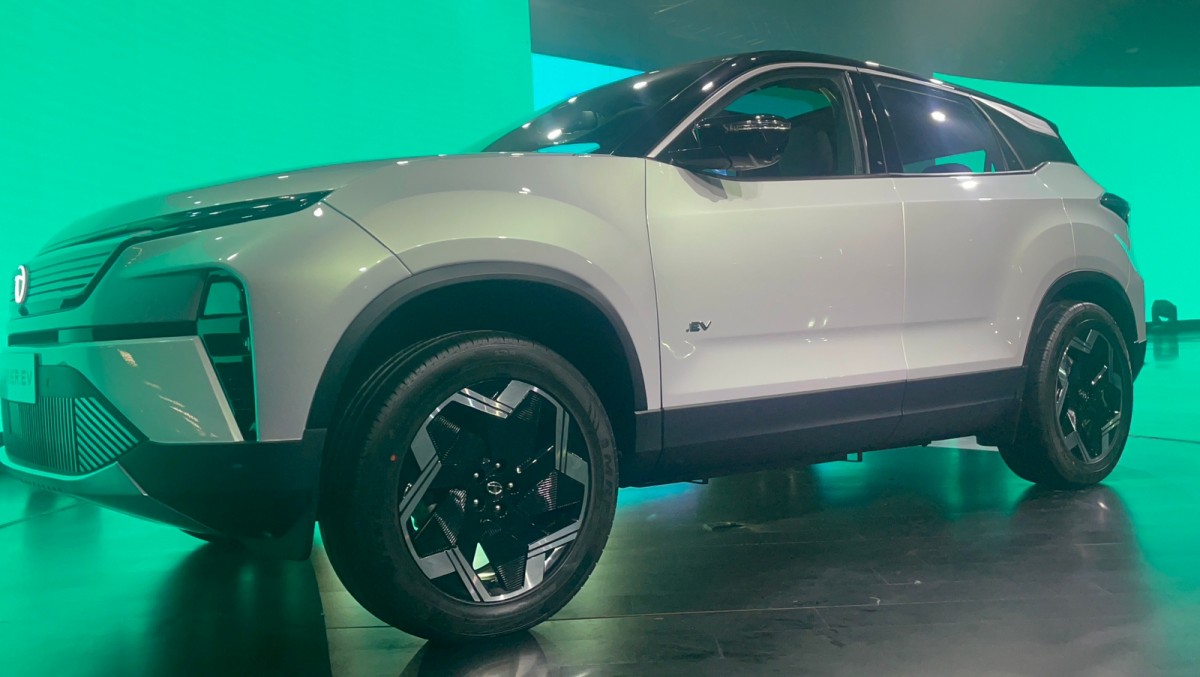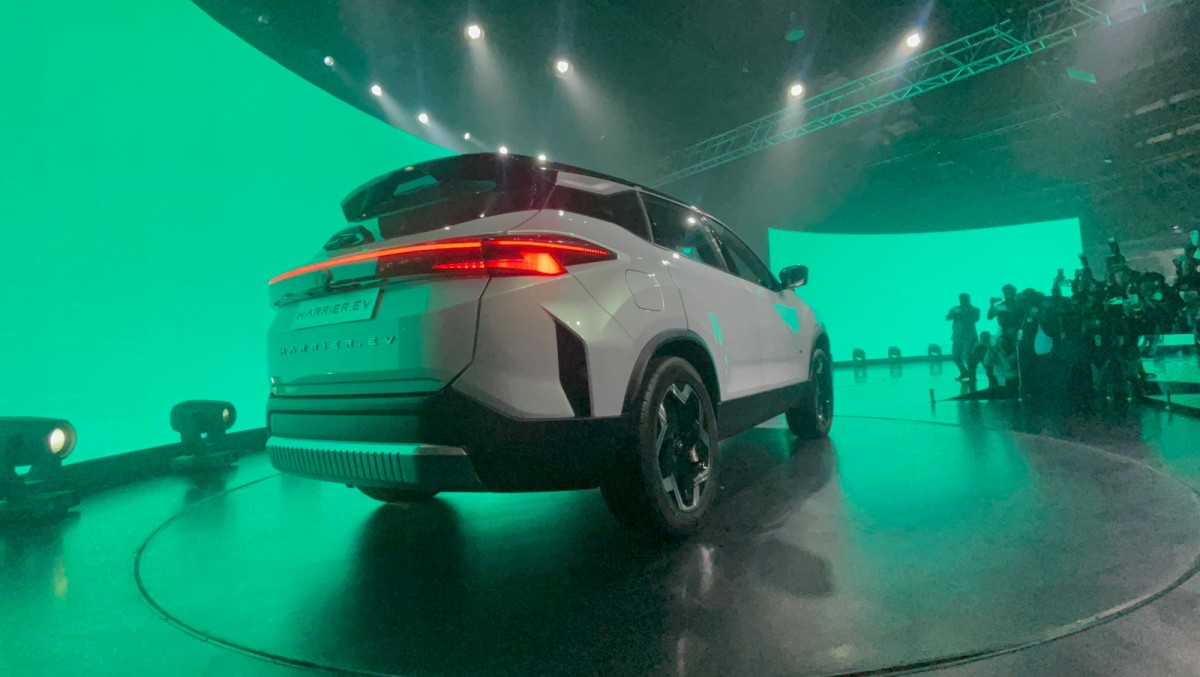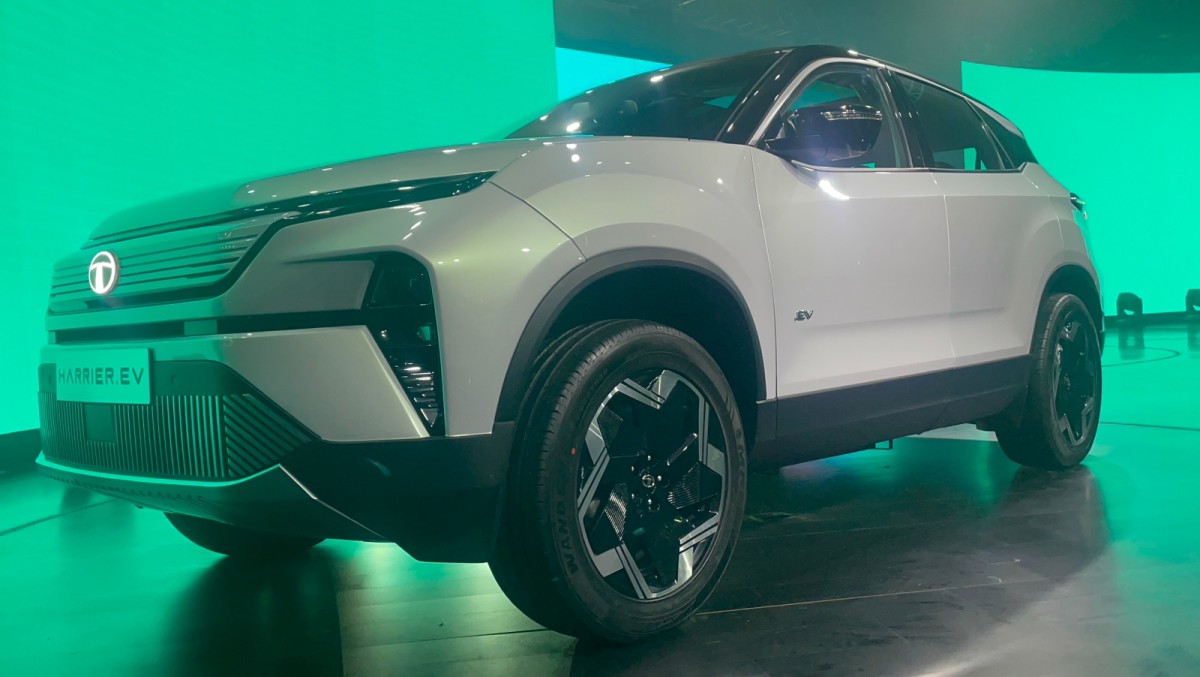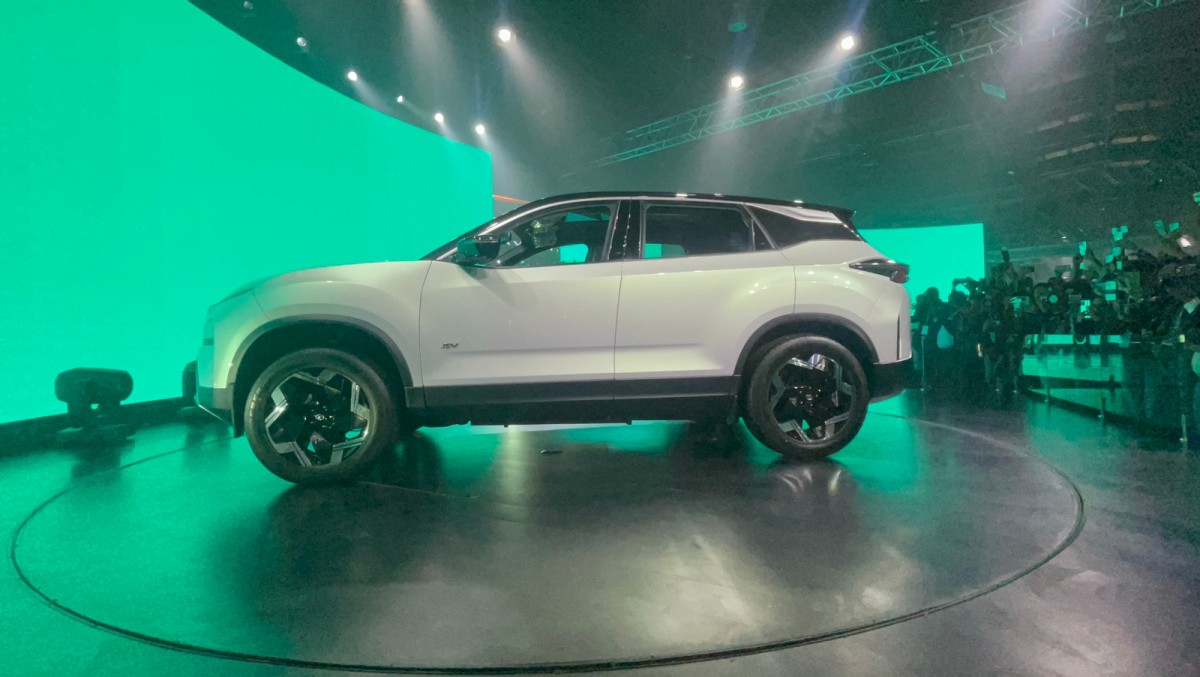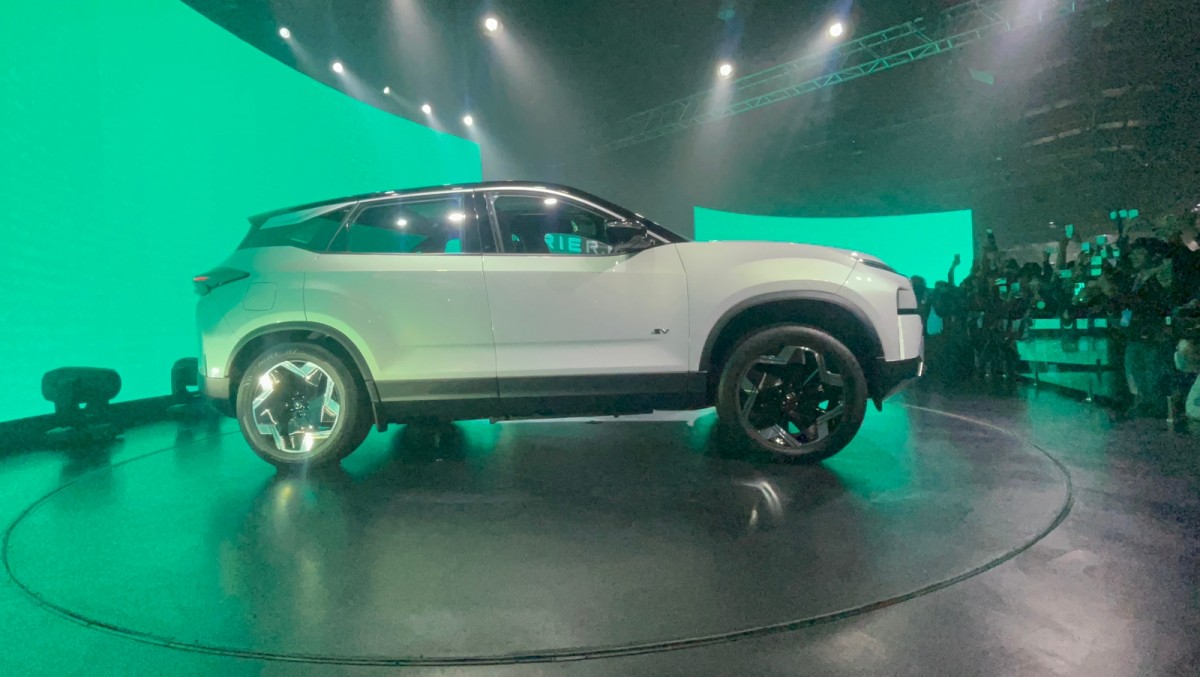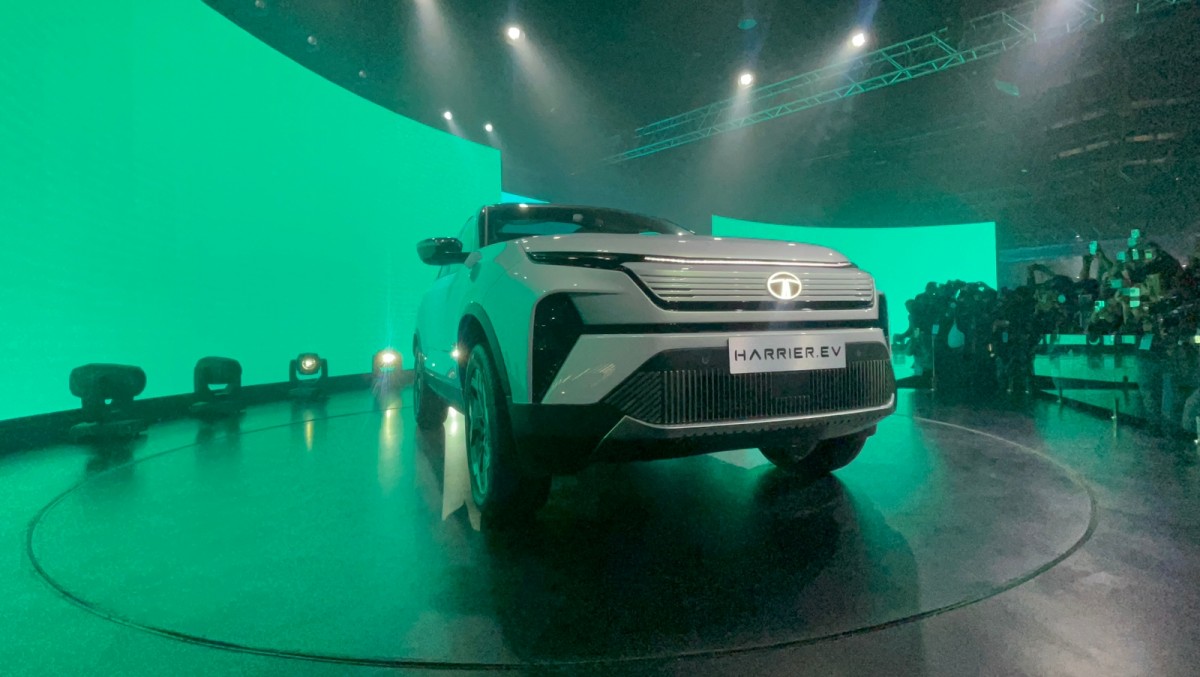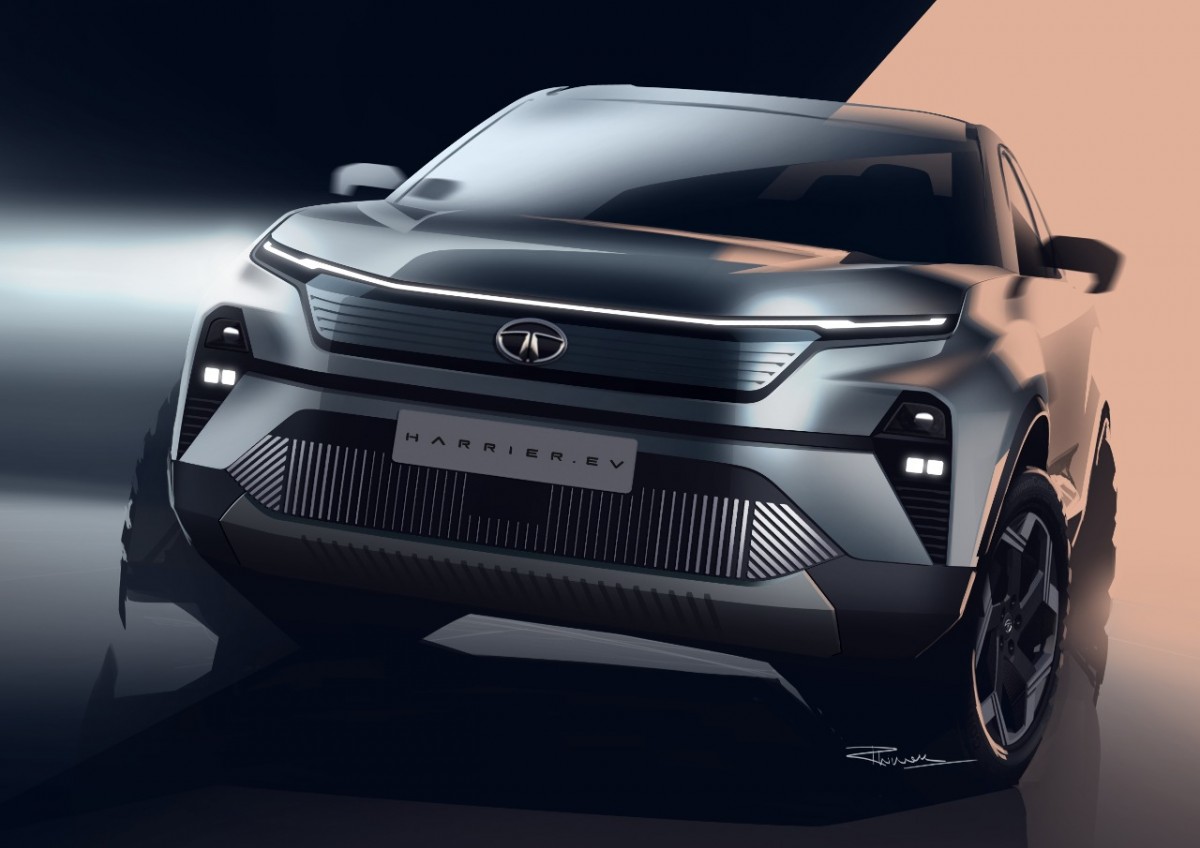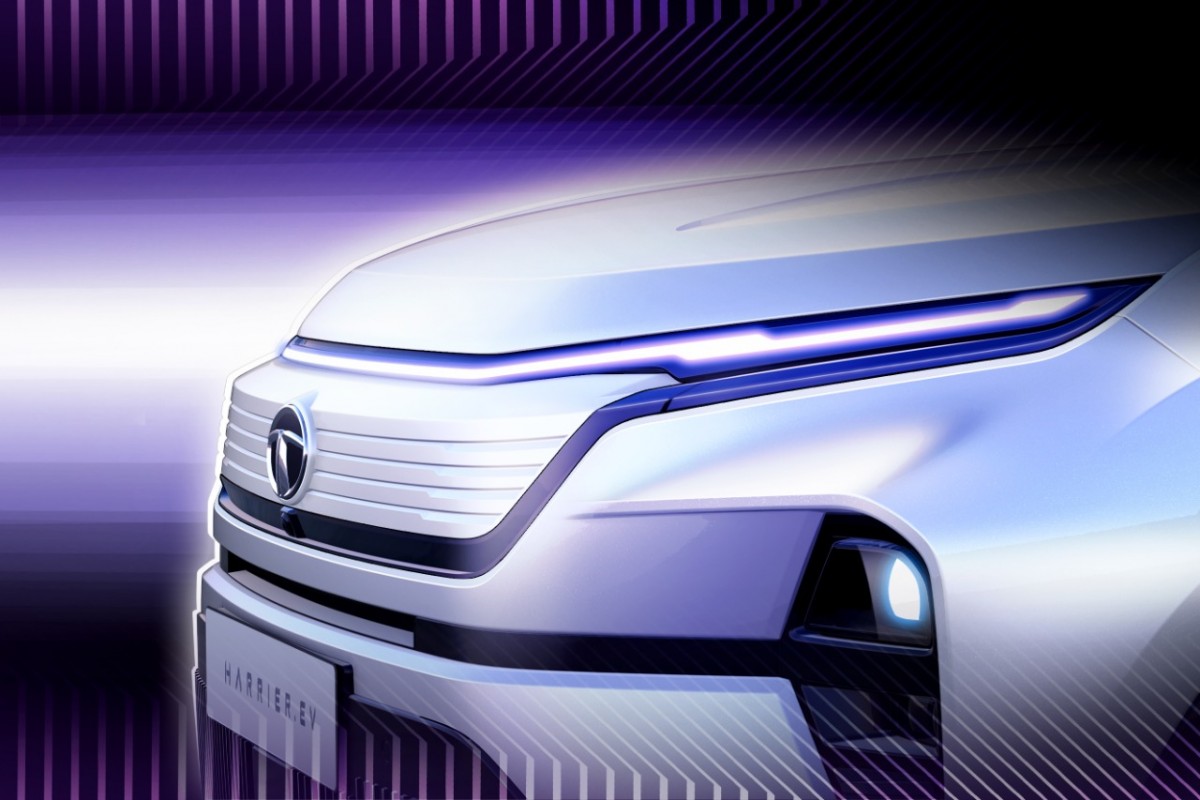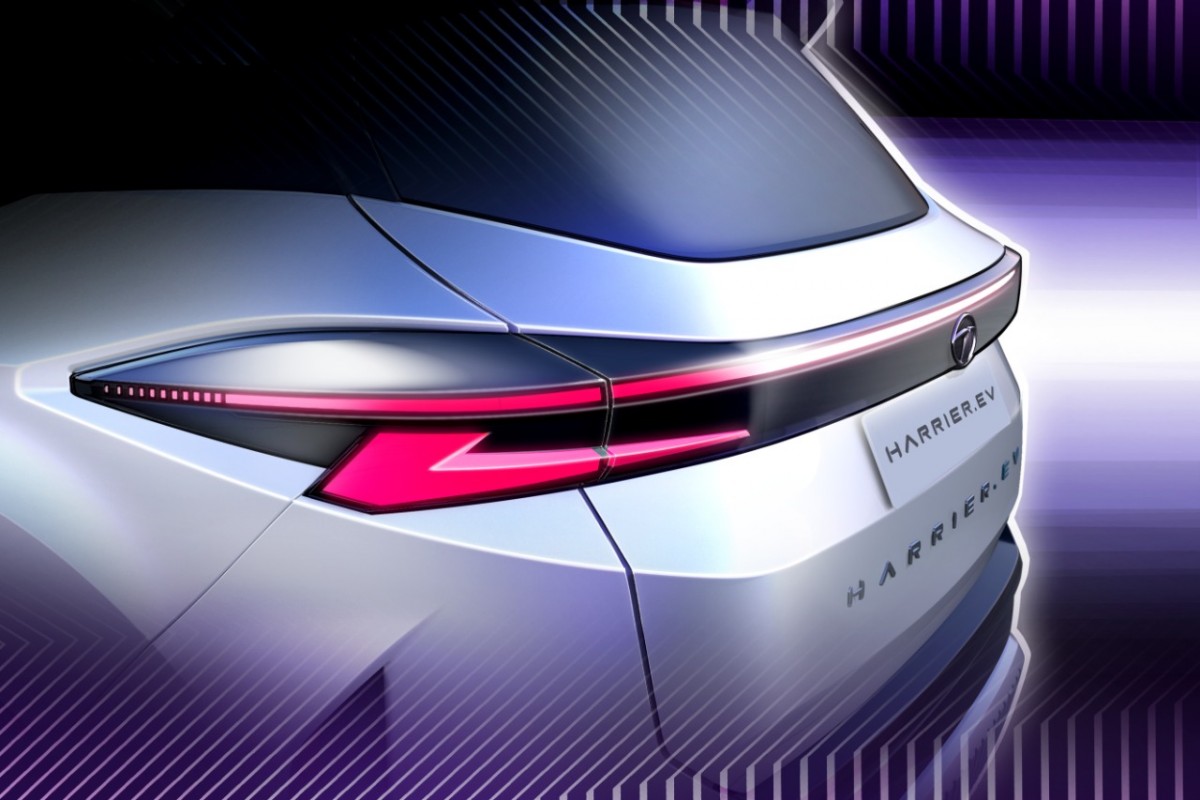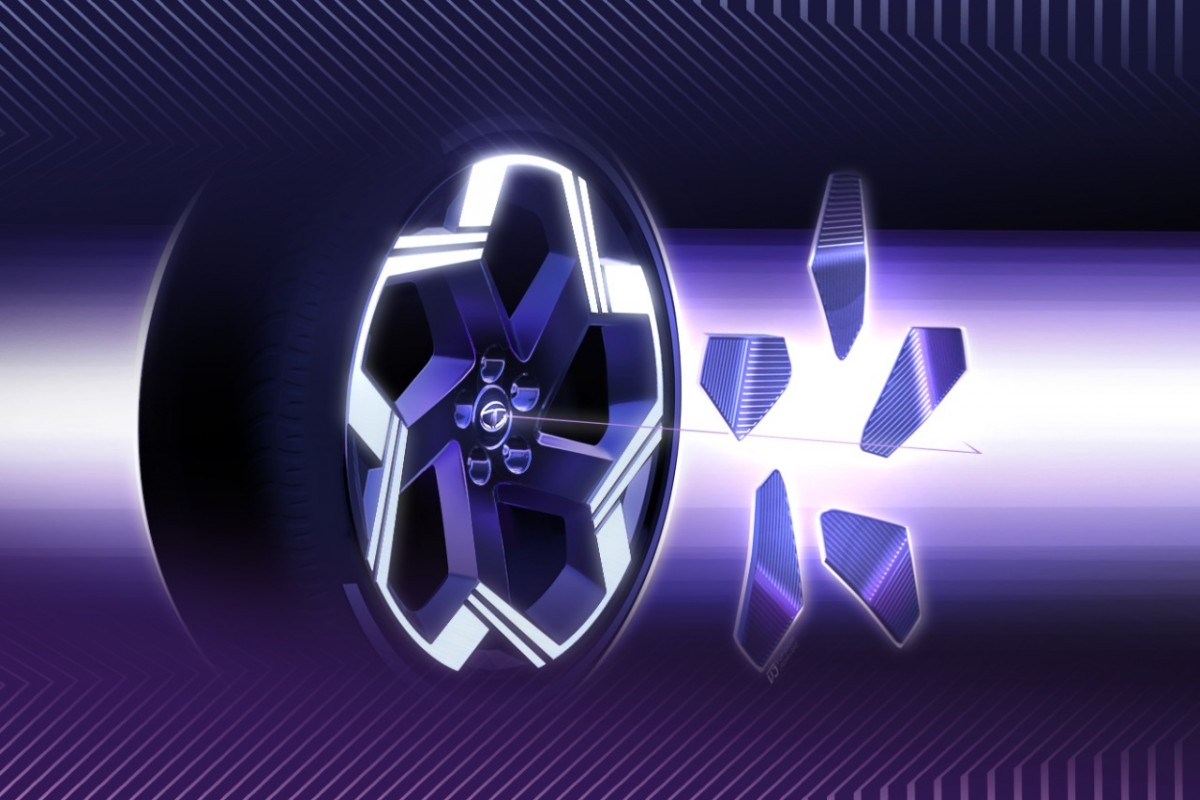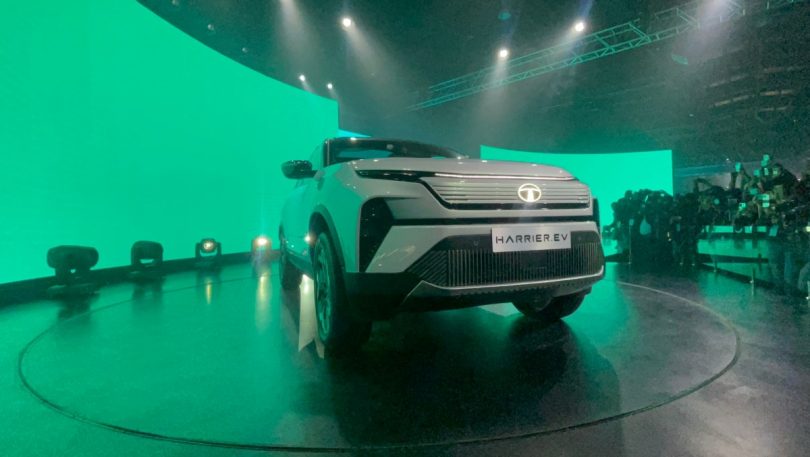Tata Motor Cars unveiled the new Tata Harrier EV at the Auto Expo 2023. The brand also revealed that the new Tata Harrier EV will come with an AWD drivetrain. This makes the Tata Harrier SUV boasts to be the country’s first All-Wheel Drive electric SUV. The five-seater Tata Harrier EV retains its OMEGA Architecture which made its debut with the ICE-powered Harrier.
Regular readers would know that the OMEGA Architecture is derived from the legendary Land Rover D8 architecture developed in collaboration with Jaguar Land Rover. The brand also revealed that the Tata Harrier EV is based on a Gen 2 architecture making it not only bold but also, a powerful and intelligent vehicle.
Tata Harrier EV – Design Features
The Tata Harrier EV comes with a futuristic and distinctive design. The brand also reveals that the Harrier EV is not only elegant but also features a dynamic SUV stance. The SUV features an elongated coupe-like silhouette with a dual-tone roof and chrome window surrounds. The Harrier EV revealed at the Auto Expo 2023 features an Empowered White body colour. The body lines on the SUV are also crisp along with sharp intersections.
On the front, the Harrier EV comes with Tata’s signature Humanity Line along with a blanked-out grille. On the sides, the car gets rounded wheel arches as well as aerodynamic alloy wheels in a dual-tone finish. The rear features a wraparound taillamp with a connected lightbar and a pronounced haunch. The SUV also gets aero-ducts integrated into the rear bumper and a skid plate at the rear.
Tata’s Greener Future
The brand reveals that the Tata Harrier EV is also in line with a greener future. Tata also recognises that urgent collaborative action is required to reduce carbon emissions. The brand also aims to attain net zero emission by 2040, through the Gen3 EV architecture strategy. The brand also revealed that the EV contribution in its portfolio is likely to increase to 25 per cent in the next 5 years and reach about 50 per cent by the year 2030.
Also Read: Tata Motors teases Safari Electric SUV
